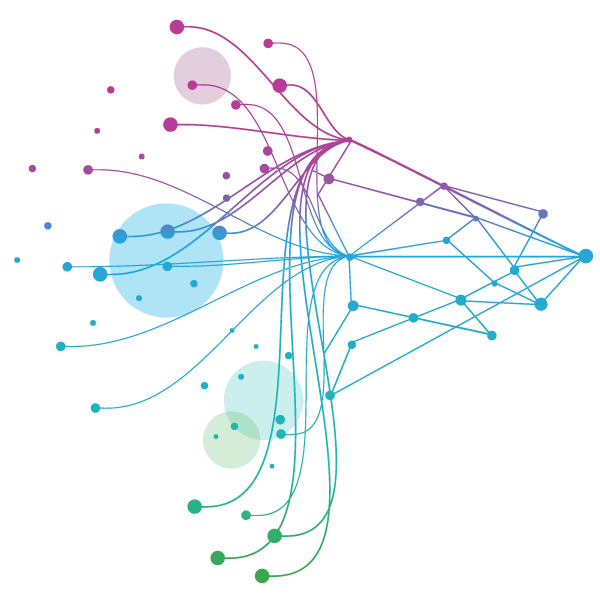Enable precise HCP targeting across dimensions like channels, timing, and messaging with industry-leading data and marketing services.






















- Blogs
- Striking a Balance: Personal Interactions vs. Non-Personal Marketing
As technology has advanced to make digital marketing touchpoints ever more targeted and personalized, it’s easy to think the days of setting up in-person sales meetings with healthcare professionals (HCPs) are coming to an end. But our experience shows that there is room for both types of interactions, with each playing a distinct yet significant role in relationship building and campaign effectiveness.
The challenge is striking the right balance between personal and non-personal approaches to sales and marketing. Sometimes companies go too far in one direction or the other. They might remove sales reps and medical science liaisons from the field in favor of digital communications, thinking HCPs will train themselves using online resources and e-learning stations.
But in reality, very few HCPs do that. Consider a primary care doctor at a busy clinic. She rarely finds time to train during office hours, and after a busy day of seeing patients, she has little appetite or energy for study or product research. For providers like her, scheduled in-person meetings are an essential source of critical information about new therapies and services.
Even so, favoring in-person communications to the exclusion of digital marketing, training and product information can also make it difficult for some HCPs. Flexibility in how information is delivered is increasingly important to meet the needs of a time-constrained and digitally diverse provider base.
We believe it’s essential to use both types of marketing within an omnichannel marketing strategy that meets HCP needs and spans the product lifecycle. Personal and non-personal contacts can be effective on their own, but they also enhance and complement each other.
Non-personal doesn’t mean impersonal
Personal contacts are those that happen face-to-face, whether in a clinical setting, at a conference or, these days, virtually via teleconferencing software. Such interactions are crucial first steps for building relationships with HCPs and better understanding their needs and preferences. Opportunities for conversation help sales reps interact with more agility and generate better results than mass marketing campaigns, but they come at a cost that far exceeds more passive digital communications.
Remember that non-personal contacts can be personalized. Think about targeted email campaigns, individualized push marketing, social media campaigns and online training modules that reflect both the individual customer journey and the product lifecycle. This isn’t the fully automated mass marketing campaign of yesteryear. Instead, it uses customer insights to tailor communications and deliver highly relevant and engaging content through the right channel and at the right time.
Yet such communications tend to have low open rates and even lower conversion rates because few HCPs follow the digital journey from beginning to end. In contrast to 20 years ago, when email volume was much lower, marketing emails—even those that are personalized—are easily lost in the noise. Unless the timing is just right or the subject line grabs attention, emails rarely stand out in a sea of communications from office staff, patients, other providers, other brands, and junk.
Nevertheless, the movement toward non-personal communications has remained steady, even if it will never (and arguably should never) fully replace personal connections. Many HCPs still value face-to-face interactions, especially when it comes to building trust and engaging in nuanced discussions. At the same time, others are increasingly comfortable with digital channels, having grown accustomed to online interactions in a post-pandemic world. It’s important to recognize the wide range of preferences and digital fluency across the provider community. A balanced approach ensures that all HCPs—regardless of where they are in their careers or how they prefer to engage—can access the information they need in the format that works best for them.
Making room for both
Rather than viewing marketing as an either/or approach, life sciences companies should include both approaches as part of a robust, well-executed omnichannel strategy. Relationships matter, and those are best fostered through personal interactions. But relationships also open doors for other types of marketing that can help build trust, increase engagement and maximize results.
Imagine a sales rep who has met with an HCP face-to-face 10 times per year for the past two years. The HCP knows and trusts the rep and is comfortable receiving marketing information from her. That opens a door to suggest moving some of those meetings to a digital platform and sharing important product information via email. The personal relationship makes the HCP more receptive to other types of non-personal interactions, such as videos, online training modules, HCP community portals and invitations to view research and participate in clinical trials.
Personal and non-personal marketing approaches are complementary strategies that should be coordinated, personalized and intentional.
- Coordinated efforts between marketing and sales ensure that each channel interaction builds on the last. Marketing and sales teams must align to guide HCPs through a seamless journey, where each channel sets up the next. Whether it’s preparing materials for a virtual meeting or following up in person with a digital touchpoint, every step should be intentional and informed by data.
- Every interaction, regardless of platform or channel, should be personalized. There is no room for “set it and forget it” mass communications in modern life sciences marketing campaigns. Instead, sales reps and brand managers must depend on their knowledge of the HCP—channel preferences, brand affinity, clinical experience, specialty, and so on—to ensure every communication is specific, targeted and relevant.
- Being intentional matters. Strategies should allow room for sales reps and marketing teams to pivot as needed based on the needs of the customer, the findings from campaign analytics, the product lifecycle and the customer journey. Be willing to evolve as the campaign unfolds.
Getting all three right is essential. In fact, we know that this is the goal of most, if not all, life sciences companies that are developing and marketing products to the healthcare community. But it’s not necessarily easy to do. Customer engagement as a whole requires constant learning and adapting over time. Channels might change, content might evolve, and customer knowledge will grow. Being able to adapt along the way will pay off.
Six Ways to Strengthen Your Omnichannel Marketing Strategy
To effectively reach HCPs, life sciences marketers must strike a balance between personal and non-personal engagement. That means understanding what the customer needs, delivering it through the right channels, and evolving as both the product and the provider journey progress. The following six strategies can help teams build more coordinated, personalized, and data-informed campaigns that drive meaningful results.
- Understand how personal and non-personal communications work together.
Personal and non-personal channels are not competing forces. When used together, they help create a cohesive experience for HCPs. Personal interactions, such as face-to-face meetings or virtual calls, build trust and open the door for deeper engagement. Non-personal touchpoints, like emails, portals or on-demand content, reinforce those messages, extend the conversation and provide timely follow-up. The key is to align both types of communication in tone, timing and purpose so that each interaction builds on the last. - Find the right channel mix Having the right message is only part of the equation. Delivering it through the right channel is just as important. An effective omnichannel strategy considers how each HCP prefers to receive information—whether that’s through email, in-person visits, webinars, digital portals or social platforms. Some content is better suited for live interactions, while other messages may be more impactful when delivered asynchronously. The goal is to meet HCPs where they are, with content that fits both their preferences and their place in the journey.
- Coordinate with sales and marketing
Sales reps are at the center of the HCP relationship, while marketing teams shape the broader campaign strategy. When these teams operate in sync, they can deliver more consistent messaging, better anticipate HCP needs and respond more effectively throughout the product lifecycle. Coordination ensures that insights from the field inform marketing decisions, and that marketing efforts support sales conversations with timely, relevant content. Success depends on shared goals, open communication and a clear understanding of the customer journey. - Don’t underestimate the power of data analytics
Understanding HCP behavior requires more than surface-level metrics. It’s not just about who you’re reaching, or when and where—it’s about why they engage, and how to tailor future interactions accordingly. Advanced analytics platforms that combine reference data with behavioral insights can help uncover patterns, preferences and opportunities for more precise targeting. When used effectively, these tools support smarter channel selection, better content delivery and stronger overall campaign performance. Learn more about how integrated data solutions can support omnichannel success. - Combine data from multiple sources
No single data point tells the full story. While metrics like demographics, open rates and conversion data are important, they only capture part of the picture. To truly understand campaign effectiveness, marketers should also track indicators such as social media engagement, portal activity, brand affinity and share of voice. Bringing these data streams together helps reveal how promotions influence behavior, how channels interact, and where to optimize. Not every return is measured in dollars, sometimes, it’s in trust, reach or long-term engagement. - Embrace the potential of artificial intelligence (AI)
AI offers new ways to uncover insights, streamline decision-making and personalize engagement at scale. Technologies like agentic AI go beyond traditional machine learning by understanding context, adapting to user needs and supporting more dynamic interactions. These tools can help teams answer complex questions such as:- What is the promotional spend for my brand compared to competitors?
- Which channels are most effective for engaging a specific HCP segment?
- How can I adjust my strategy to improve reach or conversion?
By surfacing insights that might otherwise remain hidden, AI can help marketers make faster, more informed decisions. Explore how AI is shaping next-generation marketing strategies.
Balanced is better
You can have the right product, the right audience and the right message—but without a balanced, data-informed omnichannel strategy, results may fall short. Success depends on aligning personal and non-personal engagement, guided by insights that reflect the full HCP journey. IQVIA OneKey helps life sciences organizations find that balance by combining deep data assets with advanced analytics and strategic expertise.
For a deeper look at global trends in sales force and channel engagement, download the ChannelDynamics Global Reference 2025.
You may also be interested in
Related solutions
Create and implement a personalized communication strategy that aligns to individual HCP preferences.
Provider Reference Data Network. Customers expect agile, highly personalized engagement





